The 5 Best Technology Resources for Seniors Living Solo
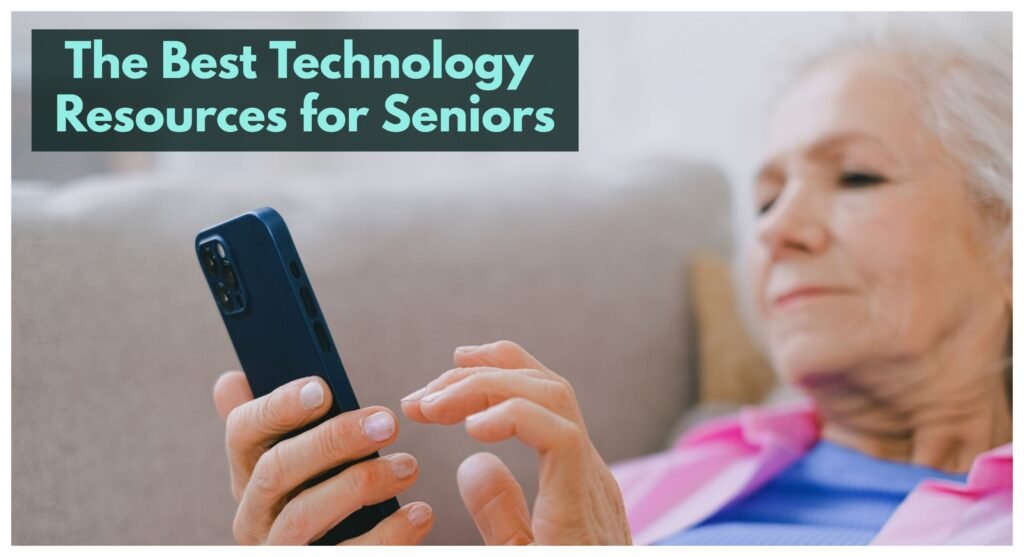
Last Updated on March 6, 2025 by Rose Ann
In today’s digital age, technology offers invaluable support to seniors living alone, enhancing their independence, safety, and overall quality of life. By integrating user-friendly devices and services, seniors can maintain social connections, manage health, and navigate daily tasks with greater ease.
Maximizing Technology Resources for Seniors Living Solo
The role of technology in enhancing the lives of seniors living alone has become increasingly crucial. With advancements aimed at promoting independence and safety, tech resources are transforming the day-to-day experiences of seniors. These innovations not only ensure a safer living environment but also foster connectivity and health management.
As the number of seniors choosing to live independently increases, so does the need for technology that supports this lifestyle. Devices and services designed for seniors help bridge the gap between independence and safety, offering tools that are both preventive and responsive. Here, we explore the best technological resources that cater specifically to the needs of seniors living solo, underscoring their importance in maintaining an independent, secure lifestyle.
Prefer to listen rather than read?
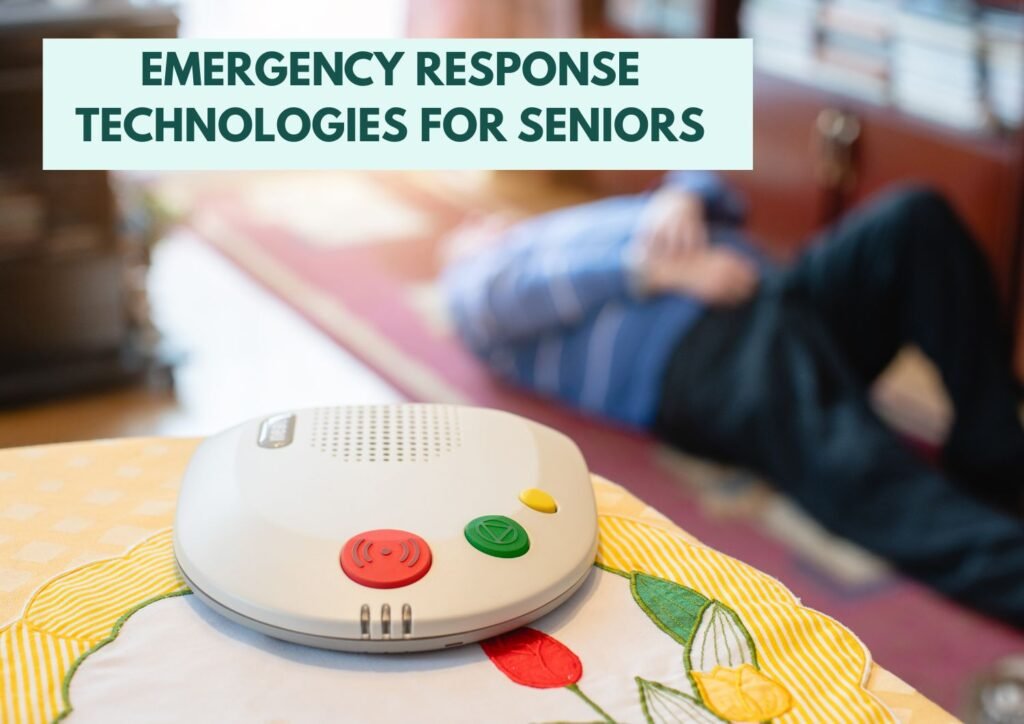
Emergency Response Technologies for Seniors
For seniors living solo, having reliable means to call for help during emergencies is critical. Emergency response technologies, particularly Personal Emergency Response Systems (PERS), have become integral in facilitating this. These systems are designed to be intuitive and accessible, ensuring that help is just a button-press away. Let’s delve into the various types of emergency technologies available, their features, and why they are essential for the safety and reassurance of seniors and their families.
- Types of Emergency Response Systems:
- Wearable Devices: Often designed as pendants or wristbands, these devices are equipped with a button that when pressed, sends an alert to a monitoring center or directly to family members and caregivers. Their wearability ensures that help is always literally on hand.
- In-home Systems: These systems may include wall-mounted devices or base stations that feature large, easy-to-press buttons. They are typically placed in strategic locations around the home, such as the bathroom, bedroom, and kitchen, where risks of falls and other emergencies are higher.
- Mobile Systems: Leveraging GPS technology, mobile systems can be used both at home and outside, providing coverage for seniors who maintain an active lifestyle. They usually come with a portable device and a base that stays at home.
- Key Features to Look For:
- Two-way Communication: Advanced systems include a speaker and microphone in the device, allowing for two-way communication between the senior and the responder, which can be crucial during emergencies for calming the individual and assessing the situation.
- Fall Detection: Some devices come equipped with automatic fall detection technology, which recognizes falls and sends an alert without the need for the wearer to press a button. This is particularly important as not all falls can allow an individual to manually call for help.
- Location Tracking: For mobile systems, real-time location tracking ensures that even if a senior cannot communicate their location, it can be swiftly accessed by caregivers or emergency responders.
- Waterproofing: Considering the high risk of falls in bathrooms, having waterproof devices ensures that they can also function in these environments without malfunctioning.
- Importance of Emergency Response Technologies:
- Immediate Assistance: These technologies ensure that seniors are never truly alone; help is always just a push of a button away, reducing the time it takes for assistance to arrive and increasing the chances of recovery.
- Peace of Mind: For both seniors and their families, knowing that there is a reliable safety measure in place provides immense peace of mind. It alleviates the anxiety associated with living alone and allows seniors to feel secure in their independence.
- Empowerment and Confidence: With the assurance that help is readily available, seniors can feel more confident and empowered to continue living independently, engaging in their normal activities without fear.
- Cost-Effective: Compared to other senior care options like assisted living or professional home care, investing in a PERS is often more cost-effective and less intrusive, maintaining the senior’s autonomy.
Integrating these technologies into the daily lives of seniors living alone not only addresses the immediate safety concerns but also contributes significantly to their overall well-being and independence. By choosing the right system that fits their lifestyle and needs, seniors can safeguard their health and continue to live fulfilling lives with confidence.
Enhancing Connectivity Through User-Friendly Tech
Maintaining social connections is crucial for the mental well-being of seniors living alone. User-friendly technology, specifically designed to meet the needs of the elderly, plays a pivotal role in this process by simplifying the way seniors interact with the world around them. Plus, seniors can supercharge their social lives with online communities, video chats, and virtual assistants like Alexa and Siri—tech has never been so fun!
Selecting devices that are user-friendly, accessible, and tailored to individual needs can significantly enhance the quality of life for older adults.
Communication Apps:
These smart devices tailored for seniors often feature larger icons and text, making the interface easier to navigate for those with visual impairments.
- Video Calling Features
- Apps like Skype, FaceTime, and Zoom have become indispensable for seniors, allowing them to participate in video calls that help bridge the gap between geographic separations. Seeing a loved one’s face can significantly boost spirits and contribute to emotional health.
- Social Media Platforms
- Platforms such as Facebook and Instagram offer seniors a window into the lives of their friends and family. These apps also provide opportunities to join groups and communities with similar interests, helping seniors feel a sense of belonging and community engagement.
- Messaging Apps
- WhatsApp and similar apps provide a simple, real-time way to stay in touch, share pictures, and updates, which keeps seniors connected without the complexities of more traditional communication methods.
New models of devices offer facial recognition and voice activation for seniors, along with health apps to track medication and appointments and communicate with doctors on Android and iOS. This allows seniors to manage their health independently.
By using these apps, seniors can easily track their progress, check their vitals, and even get reminders to take their medications. However, there are certain disadvantages to relying on these apps. For starters, seniors who are not tech-savvy may struggle to use the apps, leading to inaccurate health data.
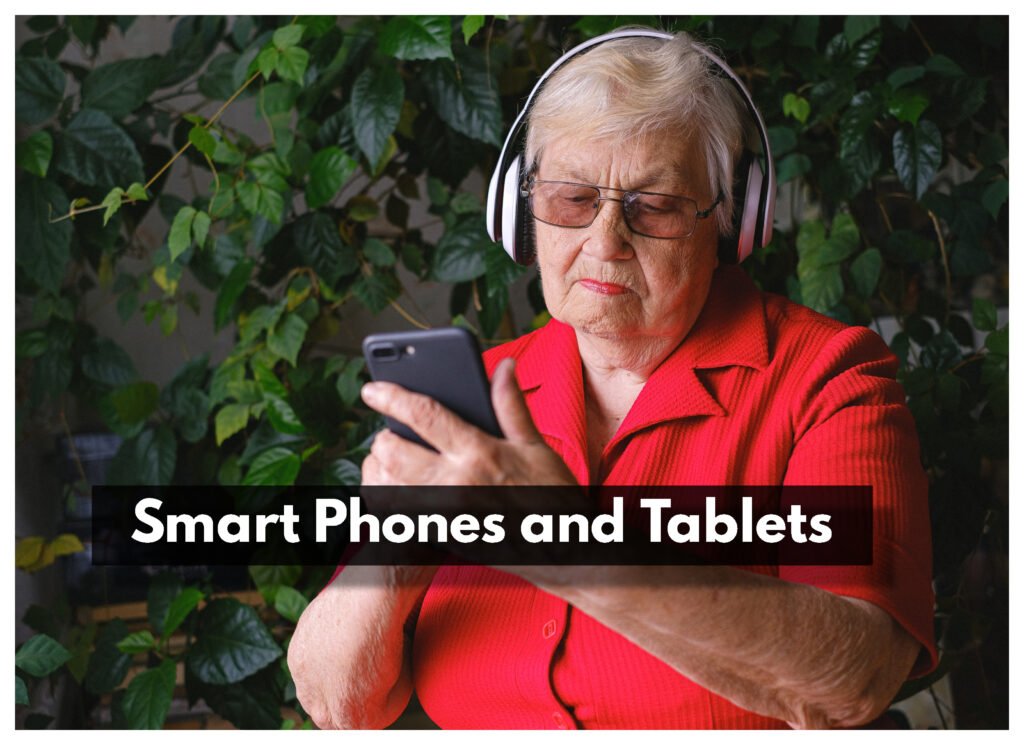
Key Features to Consider
When choosing a smartphone or tablet for a senior, consider the following aspects:
- User-Friendly Interface
- Opt for devices with simplified menus and large icons to facilitate easy navigation.
- Accessibility Options:
- Look for features like adjustable text sizes, high-contrast displays, and screen readers to accommodate visual impairments.
- Emergency Features
- Devices equipped with emergency buttons or quick access to emergency contacts can provide peace of mind.
- Durability
- Consider devices with sturdy builds or protective cases to withstand accidental drops.
- Affordability
- Evaluate the total cost, including device price and ongoing service plans, to ensure they fit within the budget.
Top Smartphone and Tablet Options
- Jitterbug Smart4
- Overview: Designed specifically for seniors, the Jitterbug Smart4 features a large screen, simplified menu, and loud speakers. It includes an emergency button that connects directly to a 24/7 response center, ensuring immediate assistance when needed.
- Key Features:
- Intuitive interface with large icons.
- Emergency response capabilities.
- Affordable pricing with flexible plans.
- GrandPad Tablet
- Overview: Tailored for seniors new to technology, the GrandPad offers a simplified interface with pre-loaded applications for easy communication and entertainment. It includes features like video calling, photo sharing, and games designed for cognitive engagement.
- Key Features:
- Easy setup with personalized assistance.
- Enhanced security with no access to the open internet.
- Subscription-based service that includes data plans and customer support.
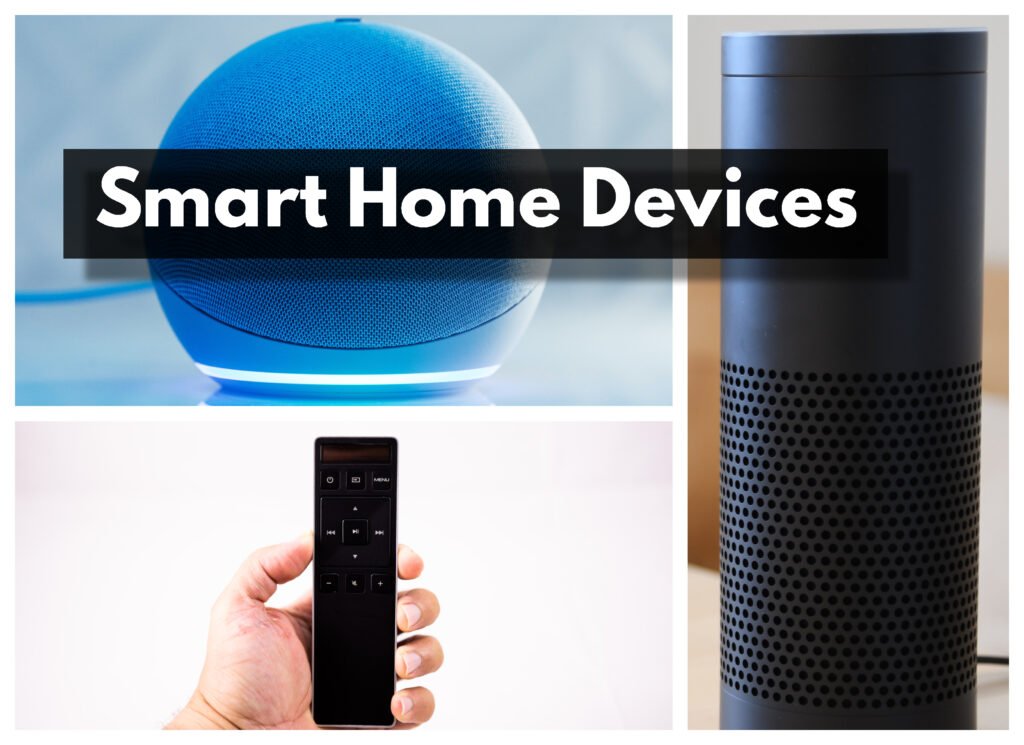
Smart Home Devices
Smart home technologies are revolutionizing the living spaces of seniors by integrating safety and convenience into their daily routines. Automated systems such as lighting, security cameras, and fall detection sensors not only provide safety enhancements but also add a layer of convenience that makes independent living more feasible and comfortable for seniors.
- Pros: Control Home Systems
- Smart home devices provide convenience and safety for seniors by monitoring and controlling home environment aspects like temperature and lighting.
- They can access online services with smart home technology, stay connected with family through smart speakers, and save money on energy bills with smart thermostats. Research can help find the right smart home technology for seniors’ needs.
- Cons: Won’t Work Without Internet
- Smart home devices offer convenience but come with drawbacks like malfunctions, privacy risks, and high costs.
- Consider the reliability of your internet connection before investing in these devices. Internet connection is essential for some devices to function properly and power outages can also disrupt their performance.
GPS Tracking Devices and Medical Alert Systems
GPS tracking devices are an incredible asset for seniors living alone, providing both safety and peace of mind. Technology has come a long way and now there are a variety of modern devices available that allow seniors to be monitored and tracked in real-time. Whether they’re taking a stroll in the park or running an errand, these devices assure their families that they’re safe.

GPS Trackers are Used to Staying Safe
Other than GPS tracking devices, there are also activity trackers. These are other great technology resources for seniors living solo can use to stay safe. Activity trackers are devices that can be worn on the wrist or clipped on clothing and are used to monitor a person’s activity level. These devices are especially beneficial for senior citizens living alone as they provide a layer of security and can alert both the user and their family members of any changes in activity levels.
These Technologies Can Send Alert and Distress Signal
Activity trackers can also alert seniors living solo if they are in an area prone to dangerous or unusual activity. Additionally, the data collected by activity trackers can be used to develop personalized health advice tailored to an individual’s specific needs, enabling them to make more informed decisions about their health and wellness. In short, activity trackers can be life-changing technology resources for seniors, providing essential support, security, and data-driven insights.
Not only that, but these technology resources for seniors also help keep them active and independent, as they can go out and explore the world with the knowledge that they are being tracked. Furthermore, seniors can rest easy knowing that if anything were to ever happen, help is only a few clicks away.
With a GPS tracking device, seniors can explore their world confidently. They also allow seniors to call for help in the event of an emergency. GPS tracking devices are one of the great technology resources for seniors to stay connected and safe while living alone.
With These Technologies, Seniors Can Access Help In Case of Emergencies
Seniors living solo can use medical alert systems to stay connected. These systems give seniors easy access to help in an emergency. By simply pressing a button on a necklace or bracelet, seniors can be connected directly to a monitoring centre 24/7.
The operator will then contact the senior’s family, friends, or even 9-1-1 if necessary. This can provide seniors with peace of mind and independence, as well as quick access to care when needed. Additionally, some medical alert systems are even GPS-enabled, which makes them great for seniors who enjoy travelling.
They include medical alert buttons that can provide a valuable service in the event of an emergency. These technology resources for seniors living solo are designed to be able to respond quickly and effectively and can be a tremendous asset in times of need.
They are programmed to be able to detect the user’s location so that the appropriate response can be activated. These great technology resources for seniors living solo also offer additional features, such as video surveillance which can provide an extra layer of protection and peace of mind.
Those living alone can find the perfect technology resources for seniors living solo to suit their individual needs and ensure the highest level of safety and security.
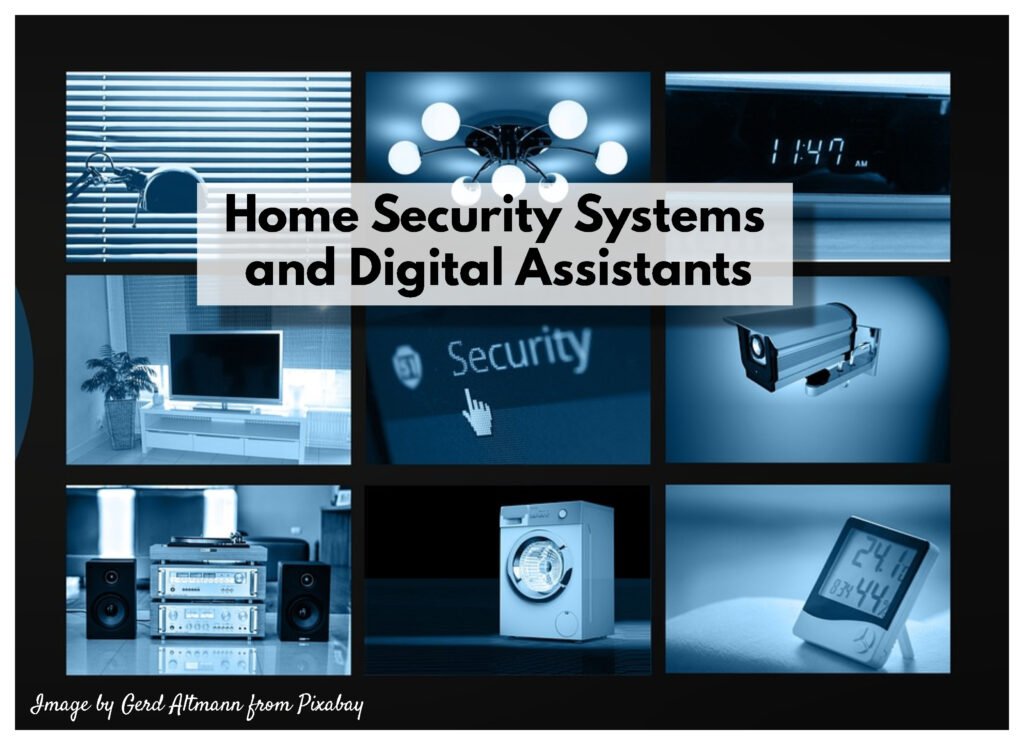
Home Security Systems and Digital Assistants
Home security systems are great technology resources for seniors living alone to stay protected. Not only do security systems provide peace of mind, but they also offer 24/7 monitoring and can detect any potential intruders in the home. Many security systems offer additional features such as motion sensors, remote access and automated locks, which can provide further protection for seniors living alone.
- Real-Time Access to a Live Video Feed
- Get real-time alerts and monitor your home with motion-activated cameras and two-way audio. Utilize cutting-edge technologies like facial recognition, smart locks, and floodlight cameras for added security. Stay connected and keep your senior loved ones safe with modern surveillance systems tailored for solo living.
- Provide Helpful Information
- Digital assistants are increasingly popular for seniors living alone, providing services like managing schedules and staying in touch with loved ones. They also offer helpful information on weather, restaurants, and activities, reducing stress and confusion for seniors managing daily tasks solo. Digital assistants are becoming increasingly user-friendly and more accessible to seniors, making them one of the best technology resources for seniors living alone.
- Drawbacks of These Technologies
- However, there are some potential drawbacks to having these technology resources for seniors living solo. The installation of a home security system can be costly, and there may also be monthly fees for monitoring and maintenance. Some home security systems are vulnerable to hacking, which could put your home and its contents at risk. This is especially true if the system is not regularly updated or maintained.
Digital assistants can help perform certain tasks and provide reminders, but they can also be used to collect personal information that could be used for malicious purposes. Digital assistants and home security systems are just two of the many innovative technology resources for seniors living solo, just make sure that you know how to limit privacy to keep being secured.
Conclusion
In conclusion, there are a lot of technology resources available to seniors living alone at present, which can be a great way for them to stay connected and safe. However, it is important to remember that some of these resources may have drawbacks – particularly when it comes to privacy. As a family, it is our responsibility to ensure our senior loved ones are aware of the risks associated with the technology they are using, and to provide guidance and support should they need it.
We should strive to ensure they are using the appropriate privacy settings on their devices, to help safeguard their data and minimize the risk of identity theft. Ultimately, our goal should be to provide a safe and enjoyable experience for our senior family members, so they can continue to enjoy the quality of life they need.
If you found this post informative, you may also be interested in reading about optimising balance for senior citizens.
Disclaimer
The content provided on MySeniors.World is for informational purposes only and is not intended as either financial or medical advice. Always consult a qualified professional before making any investment or health-related decisions.
Posts may contain affiliate links, meaning we earn a commission – at no additional cost to you, if you click through and make a purchase. Your support helps us continue providing valuable content.





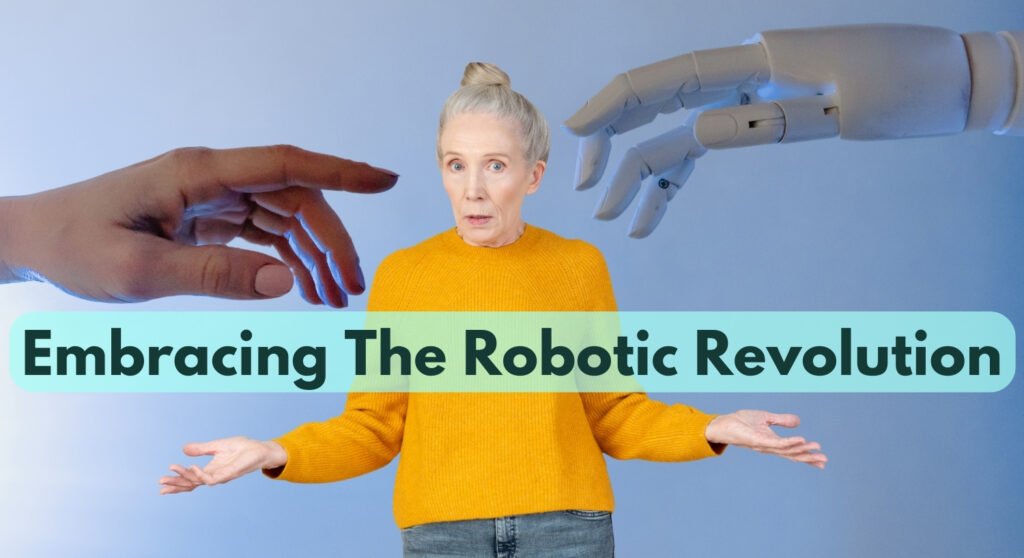
Responses